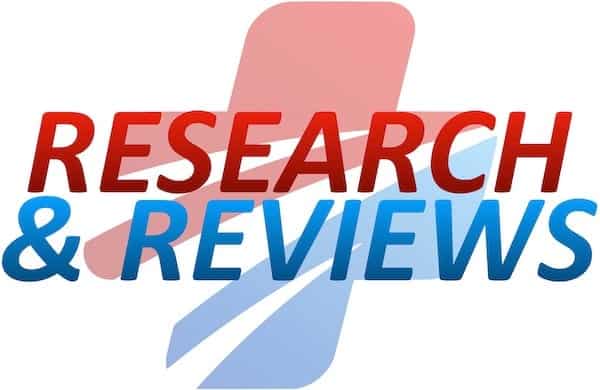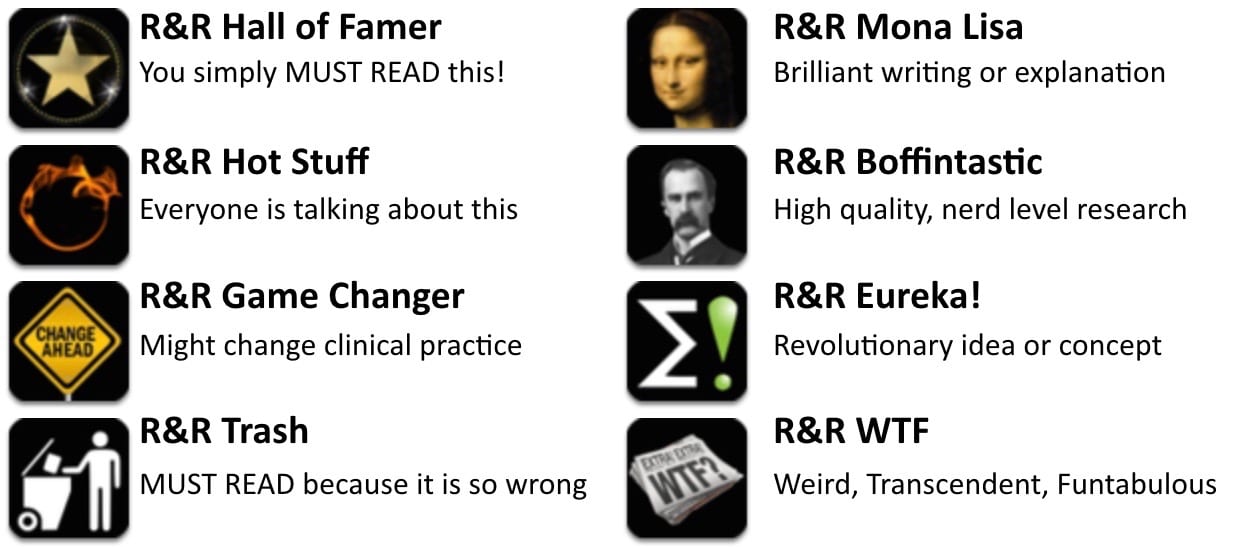R&R In The FASTLANE 061
Welcome to the 61st edition of Research and Reviews in the Fastlane. R&R in the Fastlane is a free resource that harnesses the power of social media to allow some of the best and brightest emergency medicine and critical care clinicians from all over the world tell us what they think is worth reading from the published literature.
This edition contains 6 recommended reads. The R&R Editorial Team includes Jeremy Fried, Nudrat Rashid, Soren Rudolph, Anand Swaminathan and, of course, Chris Nickson. Find more R&R in the Fastlane reviews in the : Overview; Archives and Contributors
This Edition’s R&R Hall of Famer
Slessor D, et al. To be blunt: Are we wasting our time? Emergency department thoracotomy following blunt trauma: A systematic review and meta-analysis. Ann Emerg Med 2014. PMID: 25443990
- Should we be performing ED thoracotomies in patients with blunt traumatic arrest? This systematic review and meta-analysis looked at 27 studies and concluded that while good outcomes were rare (1.5%), the patients that had good outcomes all had vitals on admission and received ED thoracotomy within 15 minutes of cardiac arrest. The primary literature is limited but their proposed algorithm on which patients to consider thoracotomy aids in providing guidance to care.
- Recommended by: Sa’ad Lahri, Anand Swaminathan, Jeremy Fried
Hamaekers AE, et al. Equipment and strategies for emergency tracheal access in the adult patient. Anaesthesia. 2011 Dec;66 Suppl 2:65-80. PMID: 22074081
- How to access the cricothyroid membrane….or not! – a great review of the literature for different ways of gaining emergency airway access via the cricothyroid membrane. Importantly, the authors remind us that “Avoiding delay in initiating rescue techniques is at least as important as choice of device in determining outcome.”
- Recommended by: Søren Rudolph
Campbell RL et al. Emergency department diagnosis and treatment of anaphylaxis: a practice parameter. Annals of Allergy, Asthma & Immunology 2014; 113(6): 599 – 608. PMID 25466802
- This paper is a practice parameter statement from The American Academy of Allergy, Asthma and Immunology (AAAAI) and the American College of Allergy, Asthma and Immunology (ACAAI). However, the first and senior authors are Emergency Physicians.
- The recommendations are mostly to be aggressive about diagnosis and monitoring: immediate IM Epi and if refractory, proceed with Epi drip, if access issues jump into IO, low threshold for airway management, aggressive volume administration, consider glucagon if refractory, consider B-agonist for bronchospasm, consider ECMO if failure to respond to medical therapy, observe for at least 4h or longer if high risk, plus some outpatient treatment guidelines. Bottom line is very aggressive management is recommended.
- Recommended by: Daniel Cabrera
Collins SP et al. Early Management of Patients With Acute Heart Failure: State of the Art and Future Directions A Consensus Document from the SAEM/HFSA Acute Heart Failure Working Group. Acad Emerg Med. 2014. PMID: 25423908.
- This consensus statement provides a great summary of what we know, and more importantly, don’t know about the acute heart failure patient in the ED. The importance of future research on the ED population for treatment and disposition issues is stressed. What do we know? POCUS has the best diagnostic criteria for the acute presentation with LR– of 0.01–0.14 and LR+ of 17.2–49.5, significantly outperforming other diagnostic testing. If you’re not using ultrasound at the bedside for the dyspneic already, time to pick up the probe. The authors also present a common sense treatment modality for acute patients based on their blood pressure. Although limited by lack of data in this area, it makes sense and is based on best available evidence.
- Recommended by: Jeremy Fried
McDermid RC et al. Controversies in fluid therapy: Type, dose and toxicity. World J Crit Care Med. 2014;3(1):24-33. PMID: 24834399
- An overview and review of the evidence underpinning key controversies in fluid management of the critically ill. Ultimately it supports the current (not completely unproven) balanced salt solution (anti-colloid, anti-chloride) zeitgeist. The paper includes useful expositions of the 3 phases of fluid management (resuscitation, maintenance/ homeostasis and ‘de-resuscitation’) as well as quantitative (volume effects) and qualitative (type of fluid) toxicities. Fluids are a ubiquitous in critical care and they are drugs – we should treat them as such and continue the search for answers.
- Recommended by: Chris Nickson
Mahler SA et al. Can the HEART Score Safely Reduce Stress Testing and Cardiac Imaging in Patients at Low Risk for Major Adverse Cardiac Events? Crit Pathw Cardiol 2011; 10(3):128-33 PMID: 21989033
- This was a cohort study of patients presenting with chest pain who had the HEART score applied. The authors found that in patients with a HEART score < 3 only 5/1070 of had a MACE at 30 days. Application of the rule would have reduced cardiac testing by 84.5% in low risk patients.
- Excluding patients with any positive troponin (you can have a positive troponin and a HEART score < 3) raises sensitivity to 100% and would still save 82% of cardiac testing. The HEART score was derived and validated in the ED and appears ready for prime time.
- Recommended by: Anand Swaminathan
Emergency physician with interest in education and knowledge translation. #FOAMed Fan | @jdfried |







